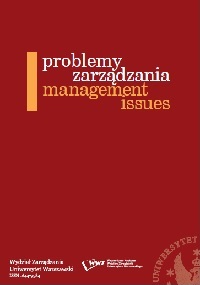Modernization of the Format of Ukraine’s Trade Integration With the EU in the Conditions of Implementation of the DCFTA
Modernization of the Format of Ukraine’s Trade Integration With the EU in the Conditions of Implementation of the DCFTA
Author(s): Olha Yatsenko, Nataliia Reznikova, Nataliia Karasova, Tetiana Musiiets, Olena Lavrinenko, Vitalii NitsenkoSubject(s): Supranational / Global Economy, International relations/trade, Marketing / Advertising
Published by: Wydawnictwo Naukowe Wydziału Zarządzania Uniwersytetu Warszawskiego
Keywords: international trade; trade agreements; development programs; marketing strategies; export-oriented model;
Summary/Abstract: Purpose: The purpose is to define the efficiency and priorities of modernization of Ukraine's trade integration with the EU countries in the implementation of DCFTA and to attempt to assess the indirect effects of the tree trade agreement between countries. Design/methodology/approach: To this end, a comparative analysis was carried out to assess the effectiveness of the Association Agreement and to identify the asymmetry of trade and economic integration between Ukraine and the EU. The correlation regression method was used to determine the dependence of Ukraine’s exports to the EU countries on GDP changes and to identity the integration impacts on economic growth. In turn, the extrapolation method was employed to calculate forecasts tor the economic growth rate and GDP per capita. Findings: Determining the effectiveness and priorities of modernization of the trade integration format of Ukraine-EU in the implementation of the DCFTA, as well as evaluation of the intermediate results of the FTA between the countries. At present, it is necessary to modernize the format of Ukraine’s trade integration with the EU in the context of the implementation of the DCFTA. Three main vectors for updating the Agreement have been identified as priorities: deepening sectoral integration; increasing duty-free export to the EU market; eliminating non-tariff measures restricting trade with the EU along with signing a number of agreements tor the above-mentioned purpose. Research limitations/implications: The results of the study will be useful to researchers of relevant issues, students, graduate students, doctoral students and teachers specializing in international relations and other academic disciplines, and the developed initiatives can be used by the government to form a new negotiating position on the Association Agreement between Ukraine and the EU. Originality/value: Forecasting and modeling the Ukraine-EU foreign trade turnover based on the use of the gravity model and correlation-regression analysis confirms that the introduction of the DCFTA in 2016-2017 allowed Ukraine to increase exports to the EU and modernization of the trade part of the agreement will positively affect the economic and social development of Ukraine. In this context, it is necessary to take into account the national interests and trade partners, in particular the possibility of Ukraine’s support tor the EU initiative “ European Green Deal” on the path to the formation of Europe as a carbon-neutral continent.
Journal: Problemy Zarządzania
- Issue Year: 18/2020
- Issue No: 4 (90)
- Page Range: 101-124
- Page Count: 24
- Language: English

